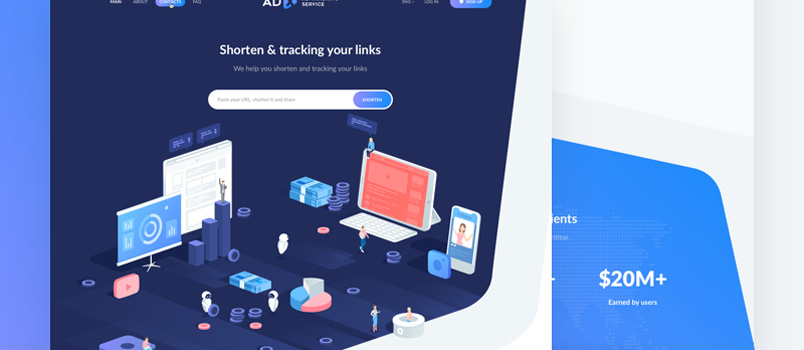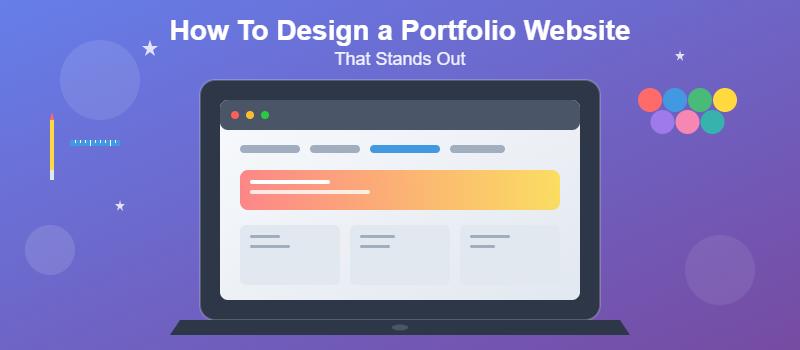There are hundreds of millions of websites active on the web. It can be hard to imagine how a single lonely website or brand can hope to make an impact.
Decent inbound marketing can be help, and Search Engine Optimization can certainly play a role, but none of these efforts will help you get visitors to stick around and see what the site has to offer.
Good, original web design is the key, because it will draw visitors in. They will be convinced that the site is owned by a professional, modern company or individual, with a keen sense of what customers need or desire.
Here are some tips and trick to help create a great original web site design.
Keep It Simple
Original web design does not mean it has to be convoluted and complex. You don’t need to toss elements on top of elements. This kind of crowding can actually harm the effectiveness of the overall design. If site visitors can’t find the information they need or want, then there’s no point to the website.
What does simplicity mean for website design?
Easy navigation. People should be able to quickly find and understand your navigation menu. The pages the menu links to should all work.
Coherent copy. Text should not use jargon and should keep a conversational tone. You should strive to make it seem like you’re simply talking to your visitors. They should get sense of the people behind the organization.
Effective call-to-action. Make your calls to action clear and attractive. This helps site visitors understand what they should do on the page. You shouldn’t crowd the page with calls-to-action, however, as it dilutes their overall effectiveness.
Keep it Consistent
Make sure the website design is consistent. All the pages should be aligned with your brand and its overall messaging. Every element of the web design should be about the brand experience, from your copy to your imagery to your typography.
Is it clear what the brand is on a page without seeing the logo? Your website design goal should be to answer that question with a ‘yes’ for every page in the site.
Make Sure Its User Friendly
Your entire design should be based around engagement for the user. Site visitors are the ones who answer calls-to-action, who generate cash flow, and who link to your website. As fancy and interesting as code and other aspects of web design can be, they simply are not as important as you users.
What makes a website user friendly?
Easy navigation. This can’t be stressed enough. The key to good, original website design is allowing visitors to find what they need or want.
Contrasting colors. Choose a color scheme that most people can read easily. Most people can’t read light gray text on a gray background, for instance.
Original Web Layout
Your layout is the foundation of your website design. The layout is the guide for site visitors. It tells them what’s important to look out and what they should do next.
It also determines your site’s overall look. You should carefully think through your layout before and during your design process.
Feel free to be creative with your original web design, but don’t let all that creativity get in the way of the site’s usability.

Think of everything from a site user’s perspective. Consider what you want them to see first, how well your message is communicated, and how easy it is for site visitors to get around the pages. Figuring out how these elements can be integrated will create the basis for your original website design.
The Blink Test
The blink test is the 3 to 5 seconds that it takes for a site visitor to determine whether they want to stay or leave a web page. If they stick around, you’ve passed.

If they leave, something is wrong with the page’s design. You should communicate your site’s purpose and what visitors should do in one glance.
How can you do that?
Concise and informative headline. Only 20% of people read past a headline. It’s vital that your headline tells you as much as it can in as few words as possible.
Value proposition. Normally this is a single sentence that quickly tells the reader what unique value they can get from the product or service.
Complementary images. All the images on the page should complement the message you’re trying to convey. A picture is worth a thousand words, after all, and they can help you convey more information quickly.
Keep it Minimalistic
No one reads every word on a site. Instead, people quickly scan webpages for important words and phrases.
Knowing this, you should design by keeping emotions in mind more than word counts.
The less your visitors have to read, remember, or click, the easier it will be for them to process the calls-to-action, meaning they’re more likely to act like you want them to. As a part of this push for minimalism, the page should only be as long as it needs to be.
Remember the Visual Hierarchy
Arrange info in a clear way. Guide site visitors along, showing them what they should look at.
You need to establish a visual hierarchy, grabbing your visitors’ attention setting a trail for them to follow.
Viewers are rarely aware of this, but designers should be very mindful of this visual hierarchy. A well-done original web design will draw viewers along without being obnoxiously obvious.
How to Achieve Overall Site Readability
Follow a few key principles to make sure your original web design is also readable (which is more original than you might think):
Use smart contrasting colors. This will make your text clear to all viewers, conveying what you want them to know.
Make font size big enough to see. Tiny text will make users quickly click away. Make sure your text is large enough for people to read easily. It can also be too big, so you’re looking for a ‘just right’ size. You should use bold fonts for the headlines.
Sans Serif is usually the best choice. While Serif is generally a bit fancier, but Sans Serif’s simplicity is easier on a viewers’ eyes, communicating your message better.
Avoid using too many fonts. You should avoid having more than three typeface on a single site. You want a look that is coherent and uncluttered, which a large number of fonts can disrupt.
Conclusion
If you want a truly original website, put yourself in the user’s place and see what really works.
Functionality is key. Once you’ve achieved that, the sky’s the limit on creativity!











